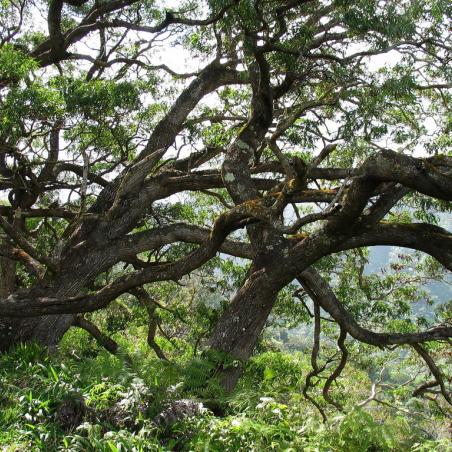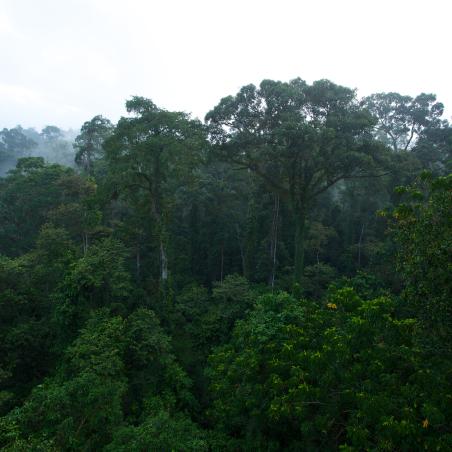News & Blogs
12/13/2016
Building A Sustainable Guitar: Sitka Spruce
Type:
Blog Post
Each fine guitar requires several rare tonewoods from around the world, representing the highest grade of the top 1 percent of all commercially available wood, a niche product with a small supply, large demand and high sales: $1.2 billion in U.S. domestic retail sales in 2014 alone.
12/13/2016
Building a Sustainable Guitar: Ebony
Type:
Blog Post
The wood underneath a guitar’s strings is called the fretboard. To function properly, it has to be perfectly constructed from wood that is hard, dense and warp-resistant. It must hold metal frets for years without any movement, since even a microscopic amount of fret movement can throw a guitar out of tune. One material is synonymous with fine fretboards: ebony.
12/13/2016
Building a Sustainable Guitar: Maple
Type:
Blog Post
Guitars appeal to our eyes as much as our ears. The most highly desired tonewoods are not only resonant and produce a good sound, but are also visually beautiful.
12/13/2016
Building a Sustainable Guitar: Koa
Type:
Blog Post
Building an acoustic guitar means considering the tonal balance of the wood as much as any structural properties. Guitars are traditionally made from several different tonewoods. In select cases, however, the guitar body can be made from just one wood.
12/13/2016
Building a Sustainable Guitar: Rosewood
Type:
Blog Post
Stringed instruments have existed for thousands of years, but what we think of as a modern guitar was only born in the mid-19th century. The guitar continues to develop as an instrument today along with advancements in new technologies and production techniques.
12/05/2016
Japan’s New Legal Timber Law
Type:
Blog Post
In May 2016, Japan adopted a new piece of legislation, called the “Law Concerning the Promotion of Distribution and Use of Legally-Harvested Timber, etc.” This law takes a different approach from other demand-side regulations for illegal timber imports, such as the U.S. Lacey Act, the EU Timber Regulation and Australian Illegal Logging Prohibition Act, in the sense that it is designed to promote the trade of legal timber, rather than attempting to eliminate illegal timber on the market.
12/02/2016
With Forest Legality Initiative, WRI enters a new phase in the fight to end illegal logging
Type:
Blog Post
Since 2010, WRI’s Forest Legality Alliance (FLA) has been at the forefront of efforts to combat illegal logging and associated trade. Together with co-founders the U.S. Agency for International Development (USAID) and the Environmental Investigation Agency (EIA), as well as over 100 partner organizations from governments, civil society, and the private sector, FLA has been a prime convener and technical resource on this crucial issue.
05/26/2016
5 Technologies Help Thwart Illegal Logging by Tracing Wood’s Origin
Type:
Blog Post
The illegal timber trade creates problems for everyone. Governments lose valuable revenue and natural resources. So governments and businesses are starting to do more to improve timber traceability, including adopting new and existing technologies that can help track timber, manage information, and eventually, help combat illegal logging.
01/14/2016
Peru’s Illegal “Ghost Trees”: What U.S. Buyers Need to Know
Type:
Blog Post
Illegal logging is an enormous problem in Peru, as shown in recent studies and reports highlighting the phenomenon’s impact on the country’s forests, including an Al Jazeera documentary exploring the links between illegal logging and corruption. A recent government audit found evidence of timber laundering, where exporters make illegally logged wood appear to be legitimately harvested.
11/09/2015
Perimeter Defense: 4 Technologies for Detecting and Preventing Illegal Logging
Type:
Blog Post
Forest defenders—from indigenous groups to government authorities—continue to struggle in stopping illegal logging. Faced with scant resources, rampant corruption and vast tracts of difficult terrain to monitor, being an effective forest manager is often an impossible task.









